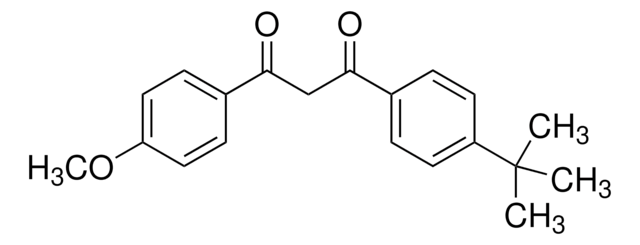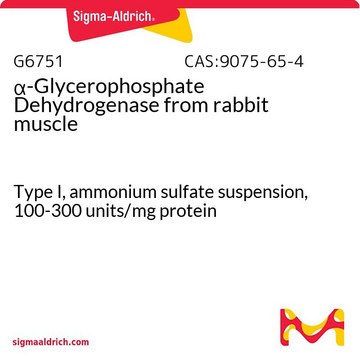Kluczowe dokumenty
T2507
Triosephosphate Isomerase from baker′s yeast (S. cerevisiae)
Type I, ammonium sulfate suspension, ~10,000 units/mg protein
Synonim(y):
D-Glyceraldehyde-3-phosphate ketol-isomerase, TPI
About This Item
Polecane produkty
typ
Type I
Poziom jakości
Formularz
ammonium sulfate suspension
aktywność właściwa
~10,000 units/mg protein
masa cząsteczkowa
53 kDa by equilibrium centrifugation
obecność zanieczyszczeń
pyruvate kinase, lactic dehydrogenase, 3-phosphoglyceric phosphokinase, phosphoglucose isomerase, α-glycerophosphate dehydrogenase, aldolase, and glyceraldehyde-3-phosphate dehydrogenase <0.01%
temp. przechowywania
2-8°C
Zastosowanie
Definicja jednostki
Postać fizyczna
Komentarz do analizy
Inne uwagi
Kod klasy składowania
11 - Combustible Solids
Klasa zagrożenia wodnego (WGK)
WGK 3
Temperatura zapłonu (°F)
Not applicable
Temperatura zapłonu (°C)
Not applicable
Środki ochrony indywidualnej
Eyeshields, Gloves, type N95 (US)
Wybierz jedną z najnowszych wersji:
Certyfikaty analizy (CoA)
Nie widzisz odpowiedniej wersji?
Jeśli potrzebujesz konkretnej wersji, możesz wyszukać konkretny certyfikat według numeru partii lub serii.
Masz już ten produkt?
Dokumenty związane z niedawno zakupionymi produktami zostały zamieszczone w Bibliotece dokumentów.
Klienci oglądali również te produkty
Produkty
Instructions for working with enzymes supplied as ammonium sulfate suspensions
Nasz zespół naukowców ma doświadczenie we wszystkich obszarach badań, w tym w naukach przyrodniczych, materiałoznawstwie, syntezie chemicznej, chromatografii, analityce i wielu innych dziedzinach.
Skontaktuj się z zespołem ds. pomocy technicznej














